
The Heartland of Ukraine: Poltava Region
Discover the rich history, cultural heritage, and scenic beauty of Poltava Region in Ukraine, a perfect blend of charming villages, historic landmarks, and natural wonders.
The Poltava Region is a gem nestled in the heart of Ukraine. Known for its rich history and cultural heritage, this region offers a perfect blend of scenic beauty and historical landmarks. From the rolling hills and serene rivers to the charming villages and bustling towns, Poltava Region is a paradise for nature lovers and history enthusiasts alike. Poltava, the region's capital, is famous for the Battle of Poltava, a decisive event in European history. The city is home to several museums, monuments, and parks that commemorate this historic battle. Visitors can explore the Poltava Battle History Museum, which provides a detailed account of the event and its significance. The White Rotunda, offering stunning views of the Vorskla River, is another must-visit spot. The region is also renowned for its culinary delights. Traditional Ukrainian dishes such as borscht, varenyky, and holubtsi are a treat for the taste buds. Local markets and restaurants serve these delicacies, giving tourists a taste of authentic Ukrainian cuisine. The Poltava Region is also famous for its pottery and embroidery, with local artisans showcasing their skills in various markets and shops. For nature lovers, the Poltava Region offers numerous outdoor activities. The Dykanka Forest and the Kremenchuk Reservoir are perfect for hiking, fishing, and picnicking. The picturesque landscapes and tranquil surroundings make it an ideal destination for a relaxing getaway.
Local tips in Poltava Region
- Visit the Poltava Battle History Museum for a comprehensive understanding of the Battle of Poltava.
- Try the local cuisine, especially traditional dishes like borscht, varenyky, and holubtsi.
- Explore the local markets for unique pottery and embroidery crafted by local artisans.
- Take a hike or enjoy a picnic in the Dykanka Forest or by the Kremenchuk Reservoir.
- Don't miss the White Rotunda for breathtaking views of the Vorskla River.
The Heartland of Ukraine: Poltava Region
The Poltava Region is a gem nestled in the heart of Ukraine. Known for its rich history and cultural heritage, this region offers a perfect blend of scenic beauty and historical landmarks. From the rolling hills and serene rivers to the charming villages and bustling towns, Poltava Region is a paradise for nature lovers and history enthusiasts alike. Poltava, the region's capital, is famous for the Battle of Poltava, a decisive event in European history. The city is home to several museums, monuments, and parks that commemorate this historic battle. Visitors can explore the Poltava Battle History Museum, which provides a detailed account of the event and its significance. The White Rotunda, offering stunning views of the Vorskla River, is another must-visit spot. The region is also renowned for its culinary delights. Traditional Ukrainian dishes such as borscht, varenyky, and holubtsi are a treat for the taste buds. Local markets and restaurants serve these delicacies, giving tourists a taste of authentic Ukrainian cuisine. The Poltava Region is also famous for its pottery and embroidery, with local artisans showcasing their skills in various markets and shops. For nature lovers, the Poltava Region offers numerous outdoor activities. The Dykanka Forest and the Kremenchuk Reservoir are perfect for hiking, fishing, and picnicking. The picturesque landscapes and tranquil surroundings make it an ideal destination for a relaxing getaway.
When is the best time to go to Poltava Region?
Iconic landmarks you can’t miss
Corpus Park
Discover the tranquility and beauty of Corpus Park in Poltava, a perfect blend of nature and culture for every traveler.

Rotunda of Peoples Friendship
Discover the enchanting Rotunda of Peoples Friendship in Poltava, a stunning monument symbolizing cultural unity and rich history amidst beautiful gardens.

Park Victory
Explore the serene beauty of Park Victory in Poltava, a perfect blend of nature and culture, ideal for relaxation and family fun.

Museum of the History of the Poltava Battle
Explore the Museum of the History of the Poltava Battle and delve into the rich tapestry of Ukraine's historical legacy.

Poltava City Park
Immerse yourself in the natural beauty and rich history of Poltava City Park, a serene escape in the heart of Poltava, Ukraine.

Poltava Local Lore Museum
Explore the fascinating history and culture of Poltava at the Local Lore Museum, a treasure trove of artifacts and stories waiting to be discovered.
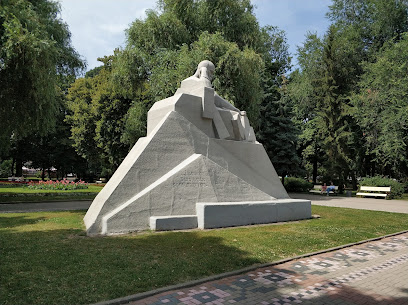
Poltava Museum and long-range strategic aviation
Uncover Ukraine's military past and aviation advancements at the Poltava Museum, a must-visit for history buffs and aviation enthusiasts.

Chestnut Alley
Explore the natural beauty of Chestnut Alley, a tranquil park in Poltava, perfect for relaxation and leisurely strolls amidst chestnut trees and vibrant flowers.

Monument to Ivan Kotliarevskyi
Explore the Monument to Ivan Kotliarevskyi in Poltava, a stunning tribute to Ukraine's literary heritage, surrounded by serene parkland.

Memorial Sign to the Poltava Galushka
Explore the Memorial Sign to the Poltava Galushka, an iconic symbol of culinary heritage nestled in the vibrant heart of Poltava, Ukraine.

Ivan Mazepa Monument
Explore the Ivan Mazepa Monument in Poltava, a remarkable historical landmark celebrating Ukrainian heritage and history.

Eagle monument
Discover the Eagle Monument in Poltava, a historic landmark symbolizing the city's rich heritage amidst serene surroundings.

Monument of Cossack Glory
Discover the Monument of Cossack Glory in Poltava, a breathtaking historical landmark embodying the spirit and legacy of Ukraine's Cossack heritage.

Monument at the Grave Ivan Kotliarevsky
Explore the Monument at the Grave of Ivan Kotliarevsky in Poltava, a key historical landmark celebrating Ukraine's literary heritage and cultural significance.

Monument to Rest of occupant Peter I
Discover the Monument to Rest of Occupant Peter I, a historical landmark in Poltava celebrating Ukraine's rich heritage and architectural beauty.

Unmissable attractions to see
Corpus Park
Explore Corpus Park, a serene botanical garden and park in Poltava, perfect for nature lovers and peaceful retreats.

Sonyachnyy Park
Experience the serene beauty of Sonyachnyy Park, a perfect urban oasis in Poltava for relaxation and family fun.

Park Victory
Discover the beauty and tranquility of Park Victory in Poltava, a lush park perfect for relaxation, recreation, and cultural exploration in Ukraine.

Museum of the History of the Poltava Battle
Uncover the history of the Poltava battle at this captivating museum, featuring artifacts, exhibits, and immersive experiences for every history enthusiast.
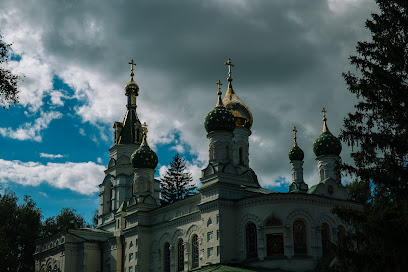
Poltava City Park
Explore Poltava City Park, a tranquil retreat in Poltava, where nature meets culture in a vibrant landscape perfect for relaxation and recreation.

Poltava Museum and long-range strategic aviation
Delve into the fascinating world of aviation history at the Poltava Museum, featuring an array of historic military aircraft and engaging exhibits.

Natsionalʹnyy Muzey-Zapovidnyk Ukrayinsʹkoho Honcharstva V Opishnomu
Explore the rich heritage of Ukrainian ceramics at the National Museum-Reserve of Ukrainian Pottery in Opishnya, a unique cultural experience.

Pavlenky Park
Explore the serene landscapes and cultural heritage of Pavlenky Park, a beautiful urban oasis in Poltava, ideal for relaxation and family outings.
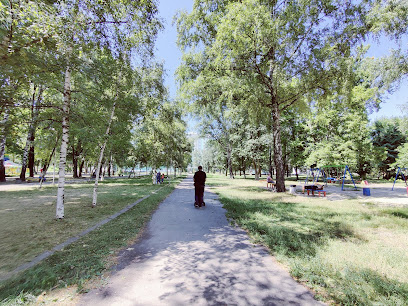
Sorochyn Yar
Experience the thrill of winter sports and serene landscapes at Sorochyn Yar, the ultimate ski resort in Kam'yanka, Poltava Oblast.

Знак «I love Poltava»
Discover the iconic 'I Love Poltava' sign in Sobornyi Square, a vibrant heart of the city offering culture, charm, and unforgettable memories.

Chestnut Alley
Explore the enchanting Chestnut Alley in Poltava, a serene park perfect for relaxation and connecting with nature amid the vibrant city life.

Park of Afghan soldiers
Explore the Park of Afghan Soldiers, a serene tribute to bravery and sacrifice, nestled in the heart of Poltava's lush landscape.

Birch Square
Discover the serene beauty of Birch Square, a picturesque park in Poltava offering lush greenery, community events, and a peaceful escape.

Independence Park
Explore Independence Park in Poltava, a serene green oasis perfect for relaxation, family fun, and experiencing local culture.

River Park
Experience the tranquility of River Park in Poltava, a beautiful destination for relaxation, recreation, and cultural exploration in Ukraine.
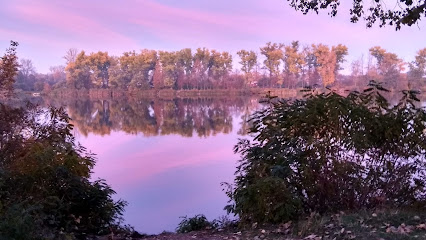
Essential places to dine
McDonald’s
Discover global fast food flavors at McDonald's Poltava - where comfort meets convenience in the heart of Ukraine.

Halushka
Discover Halushka in Poltava for an authentic taste of Ukrainian cuisine featuring traditional halushka and other regional delights.

Restaurant and Hotel Complex Hluhoman'
Experience exquisite dining and comfortable stays at Restaurant and Hotel Complex Hluhoman' in Poltava Oblast.

Komora-the First Dumpling Manufactory
Savor authentic Ukrainian dumplings at Komora - A must-visit restaurant in Poltava known for its rich flavors and welcoming atmosphere.

Kozatsʹki Rozvahy
Experience authentic Ukrainian cuisine at Kozatsʹki Rozvahy in Myrhorod – where tradition meets flavor in every dish.

Kozachka
Experience authentic Ukrainian cuisine in Poltava at Kozachka – where tradition meets taste.

Lileya
Experience exquisite Ukrainian cuisine at Lileya in Poltava – where tradition meets modern culinary artistry.

Dykanʹka
Experience authentic Ukrainian cuisine in Dykanʹka – where tradition meets taste in every dish.

Vivat Province
Discover Vivat Province in Poltava: A unique hotel and brewpub blending Russian cuisine with live music for an unforgettable experience.

Terrasa - Terrytoryya Myasa
Savor exquisite meat dishes at Terrasa - Terrytoryya Myasa in Poltava, where culinary craftsmanship meets cozy dining.

Pizza Montana
Experience the vibrant flavors of Italy at Pizza Montana in Poltava - where every slice tells a story.

Meat Wood
Discover Meat Wood in Poltava: An American restaurant offering delectable meats and classic dishes in a cozy atmosphere.

Mimino Restaurant and Hotel Complex
Discover the flavors of Georgia at Mimino Restaurant and Hotel Complex in Poltava – where exquisite cuisine meets warm hospitality.

Restaurant and Hotel Complex Muhomor
Experience unparalleled comfort and exquisite dining at Restaurant and Hotel Complex Muhomor in Poltava Oblast.

Muza-bar
Discover Muza-bar: A vibrant restaurant and club in Poltava offering delicious food, lively entertainment, and unique hookah experiences.

Markets, malls and hidden boutiques
Kyiv Shopping Centre
Discover endless shopping, dining, and entertainment at Kyiv Shopping Centre in Poltava – your ultimate retail destination!
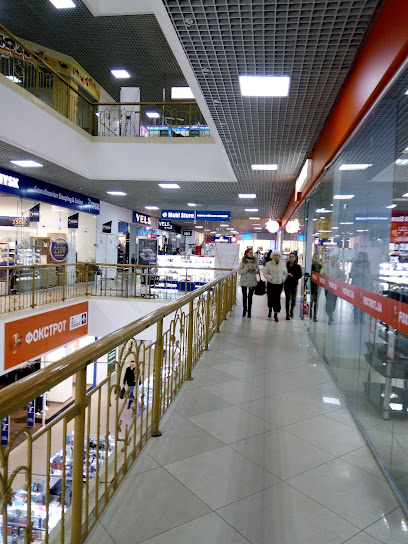
Mall Equator
Discover the vibrant shopping experience at Mall Equator in Poltava, where a world of fashion, dining, and entertainment awaits.

Zlato Misto
Discover Zlato Misto, Poltava's vibrant shopping mall featuring a variety of stores, dining options, and family-friendly events for all visitors.

DreamCraft - подарунки
Explore DreamCraft, Poltava’s premier novelty and souvenir store, where unique gifts and local treasures await every traveler.

sinsay
Discover affordable fashion at Sinsay, Poltava's go-to clothing store for trendy styles and vibrant collections.

Souvenir shop
Discover the charm of Poltava with handcrafted souvenirs, unique embroidery, and stylish clothing in this vibrant gift shop.

LAUREL Womаns boutique
Discover LAUREL Women's Boutique in Poltava for an unforgettable fashion experience featuring unique styles and quality clothing.
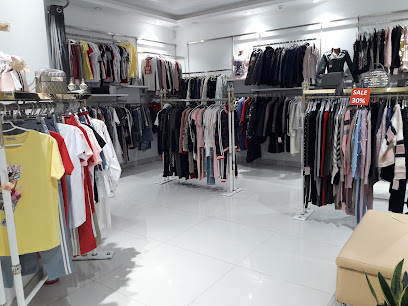
Галерея льону
Discover unique linen gifts and stylish women's clothing at Галерея льону, a charming gift shop in Poltava, Ukraine.

Shopping Mania SM
Discover timeless fashion and unique local craftsmanship at Shopping Mania SM in Poltava, the ultimate boutique experience for every traveler.

Salon Vyshyvanok Lelya
Explore the rich heritage of Ukrainian fashion at Salon Vyshyvanok Lelya, where tradition meets style in the heart of Poltava.

Suveniry Dlya Ofisu Ta Domu
Discover the essence of Poltava through unique souvenirs at Suveniry Dlya Ofisu Ta Domu, where local artistry meets heartfelt mementos.

udesign_showroom
Discover contemporary women's fashion at Udesign Showroom in Poltava, where style meets local artistry.

Vintage
Explore Vintage in Poltava for unique, handcrafted treasures that celebrate local culture and history, perfect for souvenirs and gifts.

YUKKO store
Explore YUKKO Store in Poltava for authentic local crafts and unique treasures that embody the spirit of Ukrainian culture.

Antip-Shop
Explore the essence of Poltava through Antip-Shop, an internet shop showcasing unique handcrafted goods and local delicacies.

Essential bars & hidden hideouts
Beer House
Discover the finest craft beers and delightful local dishes at Beer House, Poltava's premier brewpub for a memorable dining experience.

V M'yaso Poltava
Experience the vibrant atmosphere and authentic flavors of Ukraine at V M'yaso Poltava, the ultimate destination for pub enthusiasts.

Muza-bar
Discover the vibrant dining and nightlife experience at Muza-bar, Poltava's ultimate destination for food, fun, and entertainment.

Concrete Bar
Indulge in authentic Italian flavors at Concrete Bar, a top-rated dining experience in Poltava, Ukraine, with a vibrant atmosphere and exceptional service.

Valber
Explore the cozy ambiance of Valber, an Irish pub in Poltava, offering hearty meals, vibrant drinks, and a taste of Ireland's hospitality.

Augustine
Experience the best of Poltava's brewing culture at Augustine, a brewpub offering craft beers and delicious cuisine in a vibrant atmosphere.

Ц бар
Discover the lively Ц бар in Poltava, a cocktail bar known for its exquisite drinks, vibrant atmosphere, and welcoming ambiance.
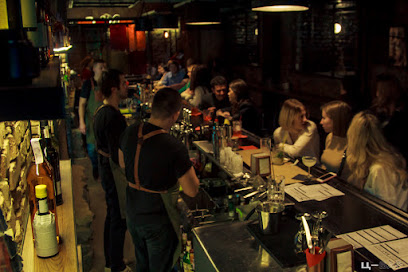
КРИШКА PUB
Discover the lively КРИШКА PUB in Poltava, a perfect blend of Ukrainian hospitality, vibrant nightlife, and delicious drinks.
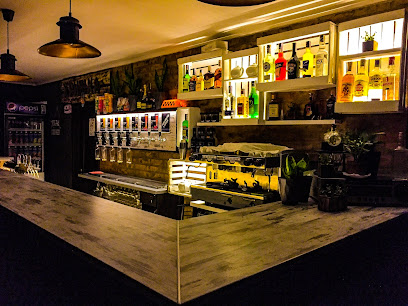
Woozy Pub
Discover the lively atmosphere of Woozy Pub in Poltava, where craft beers and local flavors come together for an unforgettable experience.

ОГНІВКА, КАФЕ-БАР
Discover the lively atmosphere of ОГНІВКА, КАФЕ-БАР in Poltava, where great drinks and friendly vibes come together for a memorable night out.

Кофе паб БАОБАБ
Discover the cozy ambiance and delightful drinks at Кофе паб БАОБАБ, a must-visit bar in Poltava for an unforgettable experience.

Тимофей и точка
Discover the vibrant atmosphere of Тимофей и точка, Poltava's premier gay bar, where diversity and nightlife blend seamlessly for an unforgettable experience.
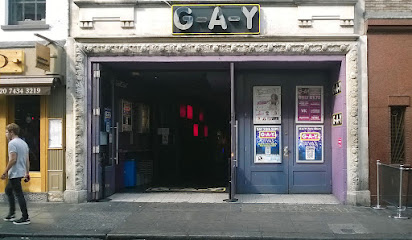
Я тут
Unwind at Я тут Bar, the heart of Poltava's nightlife, offering delicious drinks in a vibrant atmosphere.

Бар “Перець”
Discover the lively atmosphere of Bar 'Perec' in Poltava, where great drinks and a vibrant ambiance come together for an unforgettable night out.

Кафе-отрава
Experience the unique charm of Кафе-отрава in Poltava, where local flavors meet vibrant nightlife in a cozy bar setting.

Local Phrases about Poltava Region
-
- HelloПривіт
[Prývit] - GoodbyeДо побачення
[Do pobachennya] - YesТак
[Tak] - NoНі
[Ni] - Please/You're welcomeБудь ласка
[Budʹ laska] - Thank youДякую
[Dyakuyu] - Excuse me/SorryВибачте
[Vybachte] - How are you?Як справи?
[Yak spravy?] - Fine. And you?Добре. А ви?
[Dobre. A vy?] - Do you speak English?Ви говорите англійською?
[Vy hovoryte anhliysʹkoyu?] - I don't understandЯ не розумію
[Ya ne rozumiyu]
- HelloПривіт
-
- I'd like to see the menu, pleaseЯ б хотів подивитися меню, будь ласка
[Ya b khotiv podyvytysya menyoo, budʹ laska] - I don't eat meatЯ не їм м'ясо
[Ya ne yim myaso] - Cheers!Будьмо!
[Budʹmo!] - I would like to pay, pleaseЯ б хотів розрахуватися, будь ласка
[Ya b khotiv rozrakhuvatysya, budʹ laska]
- I'd like to see the menu, pleaseЯ б хотів подивитися меню, будь ласка
-
- Help!Допоможіть!
[Dopomozhitʹ!] - Go away!Іди геть!
[Idy hetʹ!] - Call the Police!Викличте поліцію!
[Vyklychte politsiyu!] - Call a doctor!Викличте лікаря!
[Vyklychte likarya!] - I'm lostЯ загубився
[Ya zahubyvsya] - I'm illЯ хворий
[Ya khvoryy]
- Help!Допоможіть!
-
- I'd like to buy...Я б хотів купити...
[Ya b khotiv kupity...] - I'm just lookingЯ просто дивлюсь
[Ya prosto dyvlyusʹ] - How much is it?Скільки це коштує?
[Skilʹky tse koshtuye?] - That's too expensiveЦе занадто дорого
[Tse zanadto doroho] - Can you lower the price?Чи можете ви знизити ціну?
[Chy mozhete vy znyzyty tsinu?]
- I'd like to buy...Я б хотів купити...
-
- What time is it?Котра година?
[Kotra hodyna?] - It's one o'clockОдна година
[Odna hodyna] - Half past (10)Пів на (10)
[Piv na (10)] - MorningРанок
[Ranok] - AfternoonДень
[Denʹ] - EveningВечір
[Vechir] - YesterdayВчора
[Vchora] - TodayСьогодні
[Sʹogodni] - TomorrowЗавтра
[Zavtra] - 1один
[odyn] - 2два
[dva] - 3три
[try] - 4чотири
[chotyry] - 5п'ять
[p'yatʹ] - 6шість
[shistʹ] - 7сім
[sim] - 8вісім
[visim] - 9дев'ять
[dev'yatʹ] - 10десять
[desyatʹ]
- What time is it?Котра година?
-
- Where's a/the...?Де є ...?
[De ye ...?] - What's the address?Яка адреса?
[Yaka adresa?] - Can you show me (on the map)?Чи можете ви мені показати (на карті)?
[Chy mozhete vy meni pokazaty (na karti)?] - When's the next (bus)?Коли наступний (автобус)?
[Koly nastupnyy (avtobus)?] - A ticket (to ....)Квиток (до ....)
[Kvytok (do ....)]
- Where's a/the...?Де є ...?
History of Poltava Region
-
The Battle of Poltava, fought on June 27, 1709, was a significant turning point in the Great Northern War. This battle saw the forces of Tsar Peter I of Russia decisively defeat the Swedish army led by Charles XII. The victory granted Russia dominance over the Baltic region and marked the decline of Swedish influence in Europe. The battlefield, now a historical reserve, offers visitors a glimpse into this pivotal moment with its monuments, museums, and reenactments.
-
Empress Catherine the Great had a profound impact on Poltava Region. In the 18th century, she initiated numerous reforms that modernized the area. She established new towns, promoted trade, and encouraged the settlement of foreign professionals, which greatly influenced the cultural and architectural landscape. The baroque and neoclassical structures in Poltava city are enduring testaments to her era.
-
Ivan Kotliarevsky, born in Poltava in 1769, is celebrated as the father of modern Ukrainian literature. His seminal work, 'Eneyida,' a parody of Virgil's 'Aeneid,' was the first literary piece written in modern Ukrainian. Kotliarevsky’s home in Poltava is now a museum, offering insights into his life and the cultural milieu of his time.
-
Founded in 1919, the Poltava Art Museum is one of Ukraine’s oldest and most significant art institutions. It houses a vast collection of Ukrainian and European art, including works by local artists who were inspired by the region's rich history and landscapes. The museum is a cultural hub, showcasing the artistic evolution of Poltava through various exhibitions and events.
-
The Poltava Region, like much of Ukraine, was deeply affected by the Holodomor, a man-made famine that resulted in millions of deaths due to the policies of the Soviet regime. Memorials and museums in the region honor the victims and educate visitors about the tragic events and their lasting impact on the local population.
-
During World War II, Poltava was a focal point of military action and resistance. The city endured occupation by Nazi forces and witnessed significant battles. The Poltava Battle of 1943 was crucial in the liberation of the area. Today, numerous memorials, including the Monument to the Fallen Soldiers, commemorate the bravery and sacrifice of those who fought in the war.
-
The Sorochyntsi Fair, held annually in the village of Velyki Sorochyntsi near Poltava, is one of Ukraine's largest and most famous fairs. With roots dating back to the 18th century, the fair is a vibrant showcase of Ukrainian culture, featuring traditional crafts, food, music, and performances. It is a living tradition that continues to draw thousands of visitors each year.
-
The Holy Cross Monastery, founded in the 17th century, is one of the most significant religious sites in Poltava Region. The monastery complex, with its beautiful baroque church and tranquil grounds, reflects the rich spiritual and architectural traditions of the area. It remains an active center of worship and pilgrimage, offering a serene retreat for visitors.
Poltava Region Essentials
-
Poltava Region is easily accessible by various means of transport. The nearest international airport is Boryspil International Airport in Kyiv, approximately 350 kilometers away. From Kyiv, you can take a direct train to Poltava, which takes around 3 to 4 hours. Alternatively, you can travel by bus or hire a taxi for a more flexible journey. The region is also well-connected by road, making it convenient for those who prefer to drive.
-
Public transport in Poltava Region includes buses, trolleybuses, and minibuses (marshrutkas). Taxis are also readily available and relatively inexpensive. If you prefer flexibility, renting a car is an excellent option for exploring the area at your own pace. For shorter distances within cities and towns, walking is a pleasant way to experience local life.
-
The official currency in Ukraine is the Ukrainian Hryvnia (UAH). Credit cards are accepted in most hotels, restaurants, and shops, but it is advisable to carry cash, especially in smaller establishments and rural areas. ATMs are widely available in Poltava and other major towns within the region.
-
Poltava Region is generally safe for tourists, but like any travel destination, it is advisable to take standard precautions. Avoid walking alone at night in unfamiliar areas and be cautious with your belongings in crowded places. While there are no specific high-crime areas targeting tourists, it is always wise to stay vigilant and aware of your surroundings.
-
In case of emergency, dial 112 for immediate assistance. For medical emergencies, there are hospitals and clinics in Poltava and other major towns. Pharmacies are available for minor health issues where you can purchase over-the-counter medications. It is recommended to have travel insurance that covers medical emergencies.
-
Fashion: Do dress modestly, especially when visiting religious sites. Avoid wearing overly revealing clothing. Religion: Do respect local customs and traditions. Always cover your head when entering churches and monasteries. Public Transport: Do be respectful and offer your seat to elderly passengers. Don't eat or drink on public transport. Greetings: Do greet people with a handshake. A slight bow of the head is also a sign of respect. Eating & Drinking: Do try local delicacies and accept food offerings graciously. Don’t refuse hospitality, as it is considered impolite.
-
To experience Poltava Region like a local, visit the local markets where you can buy fresh produce and traditional Ukrainian goods. Engage with locals, as they are often friendly and willing to share stories about the region's history and culture. Don’t miss visiting historical sites such as the Poltava Battle Museum and the Holy Cross Convent. For a unique experience, explore the rural countryside and enjoy the scenic beauty of the region.
Trending Landmarks in Poltava Region
-
Corpus Park
-
Rotunda of Peoples Friendship
-
Park Victory
-
Museum of the History of the Poltava Battle
-
Poltava City Park
-
Poltava Local Lore Museum
-
Poltava Museum and long-range strategic aviation
-
Chestnut Alley
-
Monument to Ivan Kotliarevskyi
-
Memorial Sign to the Poltava Galushka
-
Ivan Mazepa Monument
-
Eagle monument
-
Monument of Cossack Glory
-
Monument at the Grave Ivan Kotliarevsky
-
Monument to Rest of occupant Peter I
Nearby Cities to Poltava Region
-
Things To Do in Kremenchuk
-
Things To Do in Kharkiv
-
Things To Do in Sumy
-
Things To Do in Cherkasy
-
Things To Do in Zaporozhye
-
Things To Do in Zaporizhzhia
-
Things To Do in Kryvyi Rih
-
Things To Do in Kropyvnytskyi
-
Things To Do in Donetsk
-
Things To Do in Kyiv
-
Things To Do in Chernihiv
-
Things To Do in Mariupol
-
Things To Do in Kherson
-
Things To Do in Vinnytsia
-
Things To Do in Tiraspol












